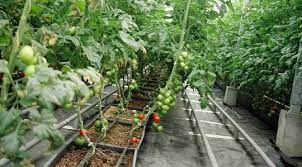Tomatoes are a popular and versatile crop that can be grown in a variety of settings, from small backyard gardens to large commercial farms. To achieve optimal yields and produce high-quality fruit, it is important to follow the best agronomic practices when growing tomatoes.
The best practices to follow in a tomato farm includes selecting the right seed cultivar, carrying out proper soil preparation, installing a proper irrigation system, practicing routine fertilization of the soil, and watching out for pest and diseases on the farmland.
6 Best Agronomic Practices For Tomatoes Farmers
1. Selecting The Right Variety:
One of the most important considerations when growing tomatoes are selecting the right variety. Different varieties of tomatoes have different growth habits, disease resistance, and fruit characteristics, so it is important to choose a variety that is well-suited to your growing conditions and intended use.
Read Also: How To Grow Tomatoes In Grow Bag [Expert Tips]
2. Proper Soil Preparation
Once you have selected the right variety, proper soil preparation is essential for healthy tomato growth. Tomatoes prefer well-drained, fertile soil with a pH between 6.0 and 6.8. To achieve this, it is important to amend the soil with organic matter, such as compost or aged manure, and to test the pH and nutrient levels to ensure that they are within the optimal range.
3. Proper Irrigation
Another important aspect of tomato cultivation is proper irrigation. Tomatoes require consistent moisture throughout the growing season, but they are also susceptible to diseases caused by too much moisture, such as blossom end rot.
To avoid this, it is important to use a drip irrigation system or a soaker hose, which can provide consistent moisture to the roots without wetting the foliage, and keep an eye on the weather forecasts and adjust irrigation accordingly.
4. Proper fertilization
Proper fertilization is also critical for healthy tomato growth. Tomatoes require a steady supply of nutrients throughout the growing season, including nitrogen, phosphorus, and potassium. A balanced fertilizer, such as a 10-10-10 formula, can be applied at planting time and then again at regular intervals throughout the growing season.
5. Monitor Against Pests & Diseases
Tomatoes are also susceptible to a wide variety of pests and diseases, so it is important to monitor them regularly and take steps to control any issues that arise. This may include using insecticides and fungicides, as well as practicing good crop management, such as proper pruning and staking.
6. Harvesting & Storage
Finally, proper harvest and post-harvest handling are critical for achieving high-quality tomatoes. Tomatoes should be harvested when they are fully ripe and at the peak of their flavor, and they should be handled with care to avoid bruising or damage.
Conclusion
By following these best agronomic practices, you can grow healthy, productive tomato plants that will yield high-quality fruit. With a little bit of care and attention, you can enjoy the taste of fresh-picked tomatoes all season long.




